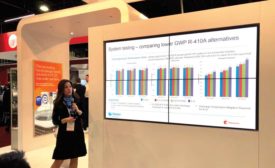Home » Refrigerant Phasedown
Articles Tagged with ''Refrigerant Phasedown''
Reclaimed R-22 Dips, No Shortages Foreseen
According to industry experts, there is an ample supply of R-22 still available for future use
Read More
HFC Phasedown: Threading The Needle
Industry leaders have been prepping legislative language to break the refrigerant impasse
Read More
A Lot of Questions About Refrigerants Coupled With a Lack of Answers
This hunger for knowledge about refrigerants is apparent all around the industry
Read More
Chemours Promotes R-454B as an R-410A Refrigerant Replacement
The new refrigerant was selected by Carrier for some of its ducted offerings
Read More
Supreme Court Refuses HFC Refrigerant Case
With the last legal challenge exhausted, the future of HFCs remains unclear
Read More
Copyright ©2025. All Rights Reserved BNP Media.
Design, CMS, Hosting & Web Development :: ePublishing










